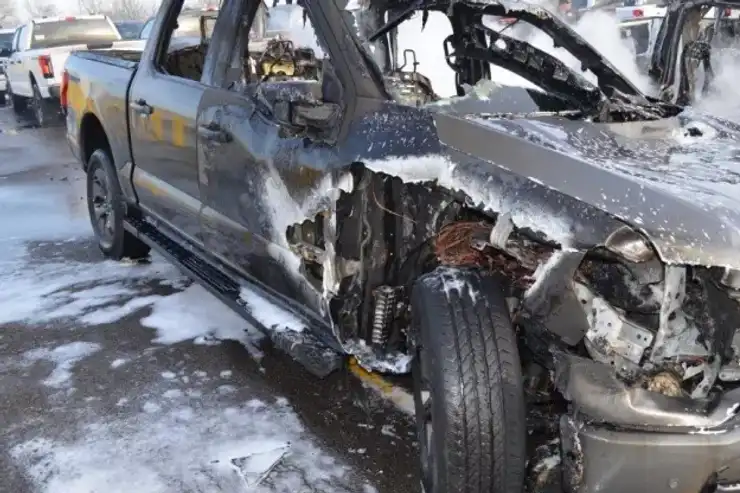Ford was hoping its F-150 Lightning would be the next hot item on the EV Truck scene. In new footage obtained by CNBC through a Freedom of Information Act (FOIA) shows a close-up look at the February fire that burned through several F-150 Lightnings at a holding lot in Michigan, in an alarming wake-up call on Ford’s quality control and the severe battery fires that seemingly plague EVs.

Clearly, this was not the hot item Ford was hoping for!
“Let’s hope it doesn’t blow up,” said a police officer responding to the fire. “The smoke is clear as day.”
It’s not clear how long the F-150 Lightnings burned, but EV fires are notorious for taking hours to extinguish.
According to CNBC, the fire originated from one pickup truck, which then spread to the two others. Ironically, the trucks were being held for a final quality check while charging and they couldn’t have failed in a more dramatic way.
As a result of the incident, Ford was forced to temporarily halt production of the Lightning as well as having numerous lawsuits filed against the company. It also ended up recalling 18 of the vehicles, though the automaker previously stated it believed the issue didn’t affect Lightnings that were already sold.
The root of the issue was blamed on faulty battery cells from South Korean manufacturer SK On, which Ford says short-circuited in the initial truck that caught fire.
Even if Ford claims to have the issue under control, it’s hard to deny how terrifying a problem EV battery fires can be. While it’s unclear if EVs are any more prone to combusting than internal combustion engine-powered vehicles, it’s undeniable that when they do go up in flames, they prove to be almost uncontrollable, and a menace even to firefighters.
“We’re not putting this sucker out. Look at it,” said a first responder to the fire, as quoted by CNBC. “They have to put like a whole freakin’ lake on it to put them out.
Not only are EV battery fires exceptionally intense, but they’re incredibly difficult to extinguish as well. The lithium-ion cells that make up the battery are replete with flammable materials like graphite, and the cathodes therein release more oxygen the longer a fire burns. In short, the fires are self-sustaining, allowing them to burn for hours upon hours, and in some cases can re-ignite days and even weeks later.
Clearly, if Ford’s EVs and perhaps EVs at large are going to catch on with a skeptical public, they’ll have to stop dramatically catching on fire.


